Game Information:
Name: Rochard
Released: September 27, 2011
Developer: Recoil Games
Rating: 8/10
Hardware Specifications:
Processor: AMD Sempron 140 2.7 Ghz
Video Card: Diamond AMD Radeon HD 4670
Memory: 4 Gigabytes DDR2 1066
Hard Drive: 2 TB Western Digital Caviar Green
System Specifications:
Distribution: Fedora 16
Kernel: Linux 3.6.10
Graphics Driver: R600 Gallium3D Driver
Desktop Environment: Xfce with compositing
Indie physics platformers are a dime a dozen these days, and I can not help but find it somewhat peculiar that in a market that seems to promote itself so heavily on its supposed innate creativity and diversity that such a genre glut as we are seeing now came to exist. People may moan when more mainstream big corporate developers churn out yet another brown looking shooter on other platforms, but the independents are starting to develop a similar record with regard to these physics platformers. I am not saying that these games are not necessarily creative or competently executed or even fun; it is just that even I have seen most of this before.
Rochard is definitely an example of this, following very much in the shoes of such titles as Trine (2009) in everything from its prominent release on the PlayStation Network to the geographic location of the game's developers. In fact, the easiest way I can think of explaining the game to another Linux gamer would be to simply say that Rochard is Trine meets Prey (2006), mixing the former titles's penchant for box stacking and controlled physics movement for the latter game's liking for mind-blowing gravity effects and even grabbing some of Prey's noteworthy emphasis on aboriginal mysticism. Oh, and Jon St. John is in it, finally showing the world that the man has a much wider vocal range than just his familiar Duke Nukem character, even if the main character does not always demonstrate it.
Gamers play as John Rochard, a hard as rock astro-miner who's been down on his luck for the past several years, with he and his team seemingly never being able to dig up anything worth anything. All of this changes when you and your crew discover an ancient structure hidden deep in an asteroid, with your team suddenly being attacked by space bandits. It is left up to you to save your friends and uncover the true secret of the asteroid, as well as fully reveal the machinations of your boss Maximilian and the rest of SkyRig and the Sky Police. Gameplay consists of combat sequences spliced in around puzzle solving, with most of the player's time playing Rochard being spent using the game's specific set piece objects in order to solve an array of gravity and physics based puzzles.
John Rochard is equipped with his own G-Lifter, a tool that builds on the already well established gravity gun/grabber concept and allows John to move and toss objects around at will. As the game progresses, the player will also have access to various upgrades that expand the G-Lifter's capabilities. For instance, later on in the game the player will be able to use the tool's gravity beam to swing on certain specific boxes and fly through the air, a technique which is important to master for those who want to survive the game's final boss fight in one piece. Towards the end of the game the player will also have access to the Helga, an older model of G-Lifter that can even lift and toss John's human opponents around just like the wizard can do against goblins in Trine 2 (2011) and it is just as satisfying here as it is there.
John's other major ability is his knowledge of artificial gravity generators, which after a little mechanical assistance from him can be made to assist him in combat and problem solving. By pressing a specific key, players can activate a low gravity mode which allows John to jump higher, lift substantially heavier objects, and perform certain acts such as the aforementioned gravity swinging, as well as a technique in which the player can jump off an already suspended box in order to acquire that last little bit of momentum needed to reach certain otherwise inaccessible ledges. It sounds complicated, and it is, but it is these little tricks that at least let Rochard come up with something vaguely innovative. All in all, these do in fact work well, allowing the player to feel like they are in fact accomplishing something by mastering the varied techniques that are put on offer.
The G-Lifter can also double as a rock blaster and a flashlight, and this is John's primary means of defence against both the space bandits and sky police. John can of course also pick up boxes and some explosive devices and toss them or drop them on enemies, which often proves to be a much more successful means of dispatching your foes. Indeed, for the first part of the game, this serves as John's only means of defence besides a rather forgettable melee attack, and it will always remain as being one of the most satisfying. Boxes and later people can also be picked up and used as shields, something that is vitally necessary when interacting with lasers and turrets, which in of themselves can also eventually be grabbed and hurled at enemies. John also later gains the ability to fire various forms of grenades, one of which can stick to objects, which add a bit of colour to the combat sequences.
Each type of grenade can be remote detonated by pressing the middle mouse button, a little trick I unfortunately did not learn until rather late in the game, making one's timing that much more important when utilizing these grenades' full destructive capabilities. Explosives are also needed to solve certain puzzles, being used mainly to blow out certain specific floor types or temporarily knock out fuses. Players will also have to use the rock blaster to clear away certain environmental obstructions, and the weapon can also often become a puzzle in of itself due to its tendency to overheat, something which is thankfully somewhat mitigated later on with later G-Lifter upgrades when combat becomes more intense. Enemies consist of armed bandits, the sky police, security turrets, and various forms of flying droids that are often a pain to kill but thankfully can also be grabbed using the G-Lifter and tossed at machinery, walls, and each other when they become too annoying.
Unfortunately though, the combat often veers between satisfying and annoying, largely due to the fact that, given the way things are set up, there is usually only one right way of handling a situation, meaning that it may take several tries of experimentation and death to get past one particularly difficult area. This is not just a problem with the combat, however. Players of games like Trine will find the freedom offered in the game to be rather limited, with there always seeming to be only one right way of doing things. As I mentioned before, puzzles consist mostly of moving specific set pieces to the right position, with everything in the game world seeming to be very rigidly defined. Trying to forge your own path and attempting to escape this orthodoxy will almost inevitably lead to failure, or at the very least stall your progress. This in turn can cause Rochard to feel a little repetitive, although the game does seem to acknowledge this fact and try to liven things up with a new ability or a new environment whenever things start to get a little dull.
The basic puzzle paradigm the game offers is trying to navigate John through the levels while interacting with three types of force fields. Red ones prevent humans from progressing but let boxes and lasers through, blue ones do not allow objects to pass, while a mix of the two stops both from getting through. Players will either have to find their way past these to move either themselves or a specific object to another part of the level, or otherwise disable the force fields by interacting with fuses. Fuses can also control doors, lifts and lasers, which unfortunately also happen to be one of the game's other sticking points. The game has a little bit of an over reliance on sudden death traps, and the lasers are the worst of the lot, delivering instant death if they even come close to the player character. Considering several puzzles involve grabbing and moving these laser beams, they quickly became a little frustrating.
Besides the objects that bring instant death, such as the lasers and areas with electric shocks, most other painful encounters hurt John by lowering his health bar, which in a rather modern fashion recharges over time and thus removes the need to hunt for medkits or other more esoteric health items. Indeed, most firefights can be won by simply backing up or hiding away from enemies until one's health recharges, and the amount of health one receives increases throughout the game as John encounters various health stations that increase the size of the bar. In a rather nice touch that actually does manage to set Rochard ahead of some of its contemporaries, John is actually affected by hard long falls or being hit over the head by an object, unlike in Trine where I can bean the wizard an infinite number of times with his own box and the worst thing that he does is rub the back of his neck in a plaintive fashion.
The fact that falling hurts also ties in nicely to the low gravity mode, which can take the edge of some of these man/ground collisions. Speaking of gravity, one other point that I have yet to elaborate on is the fact that in some parts of the game gravity becomes reversed, meaning that John now falls to the roof and you need to readjust your perspective to tackle the suddenly new world you are facing. These are in many ways the game's most memorable moments, and are the parts of the game that feel the most reminiscent of Prey, granting a similar hectic feeling of scrambling for a new foothold every time the gravity changes. Later on, after John picks up the Helga G-Lifer, you can even fire a specific type of grenade that reverses the gravity of certain objects, a neat feature especially when paired with the intermodal containers tied to tracks that the game frequently employs as puzzle objects. Grenades by the way are plentifully provided by various refill stations throughout the game, so I recommend players be a lot more liberal with them than I turned out to be.
I have so far mentioned very little about the game's storyline, and that is not due to there actually being very little of it but rather because it is another part of the game that sticks out in an odd way making it rather hard to comment on. The basic premise of the game is sound, and the game does actually attempt to provide a proper narrative with theoretically engaging if over the top characters and several emotionally invested scenes. In fact, at the beginning of the game things actually start off quite well, setting up a good dynamic between the main characters and between John and the villain, even if the characters do slide into their respective roles in a rather predictable fashion. The problem is the game seems a little unsure of what it wants to be, and several of the elements shown in the game feel somewhat uncomfortable in a game that prides itself on having a large sense of humour.
For instance, the game actually has a rather dark sequence where a main character dies, and thinking back to it now after having completed the game just makes that scene seem that much odder. It was as if all of the dramatic tension the game was attempting to build up fizzled out somewhere in the middle of the game and was instead replaced with pure plot that did not seem to go anywhere. The ending also seems to promise a big payoff that never was fulfilled upon, leaving much unexplained with their decision to leave on a cliffhanger ending. The best we are left with is this vague notion that everything in the game is connected somehow with no clear elaboration as to why this is the case, and in the end this makes much of the whole experience very unsatisfying.
Some attempts at humour are also a little questionable, such as the effeminate sky police officers later on in the game which offended certain players, even though the whole thing was done for its pure camp value. More disconcerting for me was the game's take on the ancient aliens mythos and aboriginal stereotypes. Prey got away with it more due to its well developed and respectful plot and actual input from real First Nations actors, while here it came off as more of a crass Hollywood style portrayal filtered through continental European cowboy fetishism. The character of Floyd is the obvious example of this, owning a space casino and knowing much about ancient Hopi legends while at the same time gambling their artifacts away in a poker game.
Again though, it is not really worth getting bothered about as it was all done in a spirit of good humour more than anything else, and I must admit to taking an aversion to it more because of my dislike of most ancient alien theorists than for any perceived slight against aboriginal peoples. Some other jokes that did not really work came from less controversial waters, such as one joke involving the film Bambi (1942) which the game's developers obviously thought was a lot more hilarious than I did. Thankfully, John Rochard himself as a character is a good antidote to many of these issues, well voiced by the infamous John St. John and presenting a nice alternative to the traditional video game action hero: a fat middle aged working class American southerner with a moustache and a noticeable beer gut.
Much like his voice actor's more well known character, John Rochard is also prone to be rather outspoken, bursting with lines that succeeded far better when it comes to creating an atmosphere of lighthearted humour than many of the other game elements. Not all of them turned out to be classics but almost all had a certain inherit charm, making one feel a lot more comfortable with the game and its characters. Certain other aspects, such as the Skyrig computer cancelling John's health insurance on a whim whenever he did something dangerous, also did well to lighten the mood. It is the game's graphics that really hit home the almost cartooney spirit of the game though, reminding me of the art style employed in animated films such as The Incredibles (2004). All in all, this is probably a good thing, as a certain unrealistic air is probably a wise thing to shoot for given the game's tendency for rather questionable physics calculations and effects.
Rochard also bears the singular honour of being the first Linux native title to ship with the popular Unity engine, being originally released for Linux as part of Humble Indie Bundle 6 (2012). As such, it was viewed by many as being a benchmark for that engine's new Linux support, and in that regard it shows off things fairly favourably. Installation was as simple as downloading a tarball and extracting a directory, with the game launching on first attempt with no real issues. Things continued to work well in almost every other respect from there, although one small issue did present a slight blemish to the game's technical competence. The game offers no graphical settings, and while the defaults it chose performed well, Rochard was convinced that I was playing it on a wide screen monitor and refused to allow me to set it to use my monitor's native resolution.
Instead, I had to play it at the closest one available within its chosen aspect ratio, which resulted in the screen being somewhat stretched. Although not really noticeable, it was still a completely unexpected complaint, and it could have at least compensated by offering black bars like a wide screen film would have done. I also had a couple other issues during game play, the most serious of which was when I unexpectedly fell though the floor and could not figure out how to get out. I also managed to get the game to blow up by exploding some laser fuses while leaving Skyrig headquarters, and I had one guy get stuck in the floor upon being killed and start wriggling about in a most disconcerting if hilarious manner. In fact, most of the body physics seemed kind of suspect to me, but this was the only time in the game that it egregiously broke.
Going back to talking about the game's voice cast, I must admit to finding it rather nice how old talent from the shareware age is starting to make its way into the Indie market. Much of the credit for this goes to Lani Manilla, the only woman who could make a legitimate claim of being the voice of video games. She has been building quite a voice acting cabal around herself thanks to her unique ability to become a voice in just about everything and also for her leadership role by being a prominent voice coach, bringing a considerable amount of talent with her wherever she goes. That being said, her performance here is actually one of her least inspired, although I must admit to finding it rather amusing to encounter basically the exact same voice she gave Skyler while starting to play Torchlight (2009) upon finishing Rochard for the first time, although even there it was better acted. Still, it all feeds into my assertion that the modern Indie gaming market is in fact just the old shareware games industry repackaged.
Returning back to the main subject at hand, I think it is time I started talking about the game's strengths again rather than just pointing out its weaknesses. The game does have a surprising amount of level variety, with the colourful asteroid casino level being the obvious highlight despite of it all, although the slog through Skyrig headquarters I also found to be a quite well developed experience. Areas tend to range from claustrophobic tunnels and air shafts to wide open storage bays and mine tunnels, and all of these locales are offered up with a decent amount of care and attention. Certain staged scenes also helped liven up the levels, with the most memorable usually being plot related such as having to deal with a bomb that Maximilian setup to destroy you or battling off hoards of sky police while waiting for Skyler to land.
Each level is also full of secret or hard to reach areas containing special collectible items which do well to extend the game's playtime and offer a good means of showing off one's skills, as it usually takes a decent mastery of the game's controls and John's capabilities to grab these special items. Saving is handled by a checkpoint system which does work fairly well and for the most part keeps your progress steady and stops you from backtracking too much. Past levels can also be loaded from a menu in a similar if more developed fashion as to how they were accessible in Shadowgrounds (2005), meaning that if you would like to revisit a past level or area you are always free to do so. While I always prefer a proper saving system to these relative half-measures, I must admit that all and all it did work well. The level load times were also rather on the lengthy side, but again not enough for me to really get upset about.
Another area where the game excels is with its music, offering a unique if eclectic mix of tunes composed by Markus Kaarlonen of the Finnish band Poets of the Fall, with the full band appearing in a single released with the game's soundtrack entitled Grinders Blues (2011) which serves as the game's main theme. The tracks themselves are high on atmosphere and grandeur and yet still manage to capture some of the game's zany charm, an interesting feat that causes the whole thing to compliment the game well. The game's sound effects are similarly appropriate, suiting Rochard just perfectly and adding to the game's cartooney and sometimes over the top appeal with a wide range of satisfying and always noticeable array of blasts, bangs, tinks, and booms.
The best place to purchase the title at the moment for those who missed out on it with Humble Indie Bundle 6 appears to be at the official Rochard website, where a DRM free copy of the game plus its full soundtrack is available for all three supported platforms using their Humble Store widget. The game is also available from the Ubuntu Software Centre and will probably appear for Linux on Steam sometime in the foreseeable future, with Humble Store purchasers seeming likely to also have access to Steam keys. It should also be noted that Recoil Games states that by buying direct from the developer you support their efforts to port Rochard to new platforms, as well as make DLC development possible, so if you do wish for a more satisfying conclusion to the game this may be the best way to go.
I must stress that I did enjoy Rochard, despite how critical I may have sounded in this review. None of these flaws were to the long term detriment of the game and the amount of things done right far out way the complaints I have offered here. In the end it comes across as what it was probably always meant to be: a fun and competent physics platformer that does not take itself too seriously. The gameplay is sound, the main character is engaging, the soundtrack is great, and the experience is most definitely enjoyable. While the plot and some of the jokes could have used maybe a bit more thought, it is not enough to tarnish an otherwise very competently executed game. It may be one fish swimming in an already quite full pond of similar creatures, but it at least offers enough flavour to make it a desirable catch.
Hamish Paul Wilson
December 27, 2012
ADDENDUM: A few months after writing this review Recoil Games released their first DLC for Rochard entitled "Hard Times". While unfortunately not adding any form of plot elaboration, it does provide five new levels designed to test even the most seasoned Rochard players. That being said, while you do need to know Rochard to play them, most of the new puzzles are merely elaborations on what has come before, meaning that for experienced players they do not in fact present that much more difficulty. Things do become harder as the campaign progresses, but this is mostly due to the inclusion of less thought based puzzles in favour of even greater reflex tests that often require a lot more luck than skill. I also hit a bug wherein if the game was full-screen a lot of the effects and lighting would stop functioning about half-way through the fourth level, a problem which I am currently discussing with Recoil Games support. Overall it is an enjoyable extension for fans of the original game, but it does not really add that much more value to the original Rochard package.
Hamish Paul Wilson
September 28, 2013
Nice review, Danish.
Nice review, Danish.
Lol! Oh my the names keep coming. GOL finally has it's own home grown funny thing.
Good review. The game is a bit easy and short, but I enjoyed it from start to end. The Unity engine has debuted very well, everything run smooth, and it's the first game I've seen that lets me change the system volume with the media keys. I didn't have problems with screen resolutions.
I actually tend to find most games a bit long actually, as I find that most developers like to extend a game past it effectiveness due to the notion of gameplay hours equalling game worth. So that is probably the reason why I personally did not have a problem with the length of the game.
[http://www.rochardthegame.com/en/2012/12/24/happy-holidays-from-the-rochard-team/](http://www.rochardthegame.com/en/2012/12/24/happy-holidays-from-the-rochard-team/)
I'm not sure I agree with some of your story critique - the death towards the end of the first act of the game signals a shift in tone and stakes. It doesn't really seem out of place with the game's pacing, and serves to provide motivation for John's actions and attitudes throughout the rest of the game. I'll agree that the ending is a little lacklustre though - it feels awfully like the game ended before it was ready. I spent a little bit of time hunting around after completing the game to see if there was an alternative ending for getting all of the collectibles (something that isn't visibly tracked in the DRM free/Linux version of the game due to its reliance on Steamworks).
A lack of configuration options seems to be a hallmark of Unity titles from what I can tell. Splice suffers from this as well (though apparently that has a launcher with configuration options that isn't included in the Linux version). I ran Rochard in windowed mode and didn't have any resolution problems at all.
All up, I found Rochard to be an unexpected gem, and it kept me captivated enough to finish in one sitting back when the HIB 6 launched (still looking forward to finding time for a second playthrough).
I'm not sure I agree with some of your story critique - the death towards the end of the first act of the game signals a shift in tone and stakes. It doesn't really seem out of place with the game's pacing, and serves to provide motivation for John's actions and attitudes throughout the rest of the game.
While I can see your point, I still do not agree mostly because it does not seem to add much to the game. His death seemed to contribute very little as we did not need anymore reason to dislike Maximillain, who had been screwing them out of their jobs by getting them to hunt for the asteroid and was now even threatening to fire them for it. Now granted, Zander did not really have any other purpose but to give a noble death, but with Maximilian screwing them and then sending the wild boys after them, his only purpose in life (and death) seemed to contribute virtually nothing of inherent value to the plot. It is not like it really builds up to anything later in the game, other then his vague musings about the connectedness of everything before he snuffed it, and if anything the game gets lighter as it goes along not darker, so to me it just makes things seem incongruous. It is like everyone simply forgot about it, except for when John needs to take Switchblade. It seemed to me to go like this: we kill off a potential main character, and then we spend the rest of the game making bambi jokes. :P
Still, it is not like I really minded the death, but to me it just added to the notion that the plot seemed a little haphazard. Still, thank you for arguing with me about it; I always wanted these things to engender some real discussions about the games. ;)
His death seemed to contribute very little as we did not need anymore reason to dislike Maximillain, who had been screwing them out of their jobs by getting them to hunt for the asteroid and was now even threatening to fire them for it.
Ah, but it's not about us, it's about John, who's depicted with a fairly level headed and slow-to-anger type persona - without that catalyst, his actions would have been out of character (at least, from my interpretation of him). I'll admit that it was unduly ignored throughout the rest of the game, and could have been used to bring a little more gravitas when the plot called for it.
Still, it is not like I really minded the death, but to me it just added to the notion that the plot seemed a little haphazard. Still, thank you for arguing with me about it; I always wanted these things to engender some real discussions about the games. ;)
My pleasure ^_^
I also haven't played it with a review in mind though - I was too busy enjoying it on my first run through to cast a critical eye over it.
Ah, but it's not about us, it's about John, who's depicted with a fairly level headed and slow-to-anger type persona - without that catalyst, his actions would have been out of character (at least, from my interpretation of him). I'll admit that it was unduly ignored throughout the rest of the game, and could have been used to bring a little more gravitas when the plot called for it.
Yes, the fact that the later half of the game did not live up fully to the expectations placed on it was my main concern with it. Keep in mind that John and Skyler were both depicted as being very caring individuals, so the fact that Zander's death is not really brought up again or mentioned upon meeting Maximillian (as far as I can recall) seems a bit odd to me.
I also haven't played it with a review in mind though - I was too busy enjoying it on my first run through to cast a critical eye over it.
Yeah, you do sound a lot more critical when you actually have to write about something objectively. Just don't let me or anyone else ruin the fun for you. ;)
Yes, the fact that the later half of the game did not live up fully to the expectations placed on it was my main concern with it. Keep in mind that John and Skyler were both depicted as being very caring individuals, so the fact that Zander's death is not really brought up again or mentioned upon meeting Maximillian (as far as I can recall) seems a bit odd to me.
I guess a rationale (if it were intentionally neglected) could have been that his death was meant to push them to extremes, and then once they were in over their heads, too much was going on for them to stop and linger on it.
It'll be interesting to see whether the DLC addresses any outstanding plot points from the game.
Yeah, you do sound a lot more critical when you actually have to write about something objectively. Just don't let me or anyone else ruin the fun for you. ;)
No risk of that - I loved the game :D
It'll be interesting to see whether the DLC addresses any outstanding plot points from the game.
Definitely have to agree with that. ;)
I found it pretty challenging - there were a couple of puzzles which had me stumped at first (in particular, I spent a long time on the first robot encounter, and there were a neat set of power node + force field puzzles which had me scratching my head for a bit). On the whole, I'd say that the difficult is quite a step above the original game both in terms of skill and thought based puzzles (which may be a comment on the difficulty of the original game more than the DLC itself?).
I also was disappointed by there not being any story component to the DLC, but I did find it enjoyable ^_^
Also, keep in mind that the combat difficulty is way down in Hard Times as compared to the original, which in my opinion evens things out.
Well, in my opinion nothing in the DLC truly equalled the difficulty of that one laser puzzle pictured in the review screenshots. :PHa ha, I found that laser puzzle to be pretty straightforward :D
Also, keep in mind that the combat difficulty is way down in Hard Times as compared to the original, which in my opinion evens things out.Yeah, combat difficulty (and combat encounters in general) is down, though IMO, the increased prevalence of dexterity puzzles (exemplified by the box conveyor puzzle) fills that void.
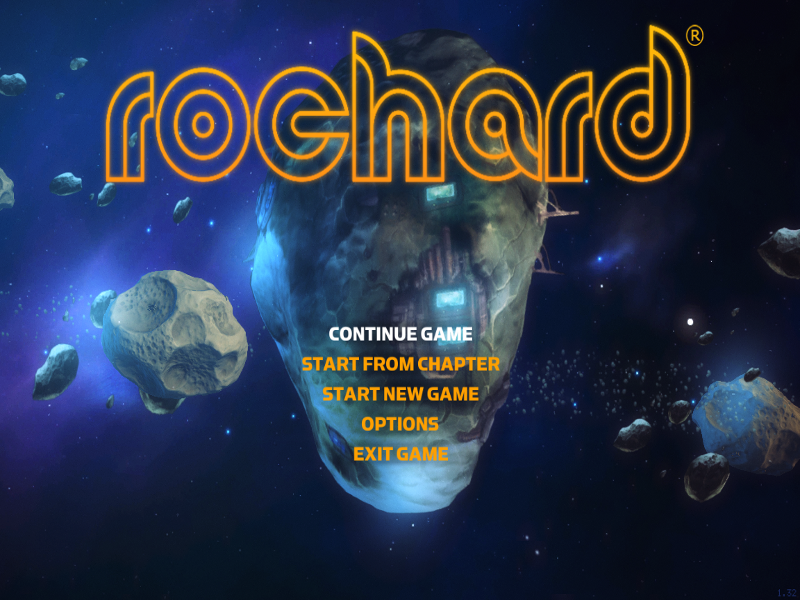
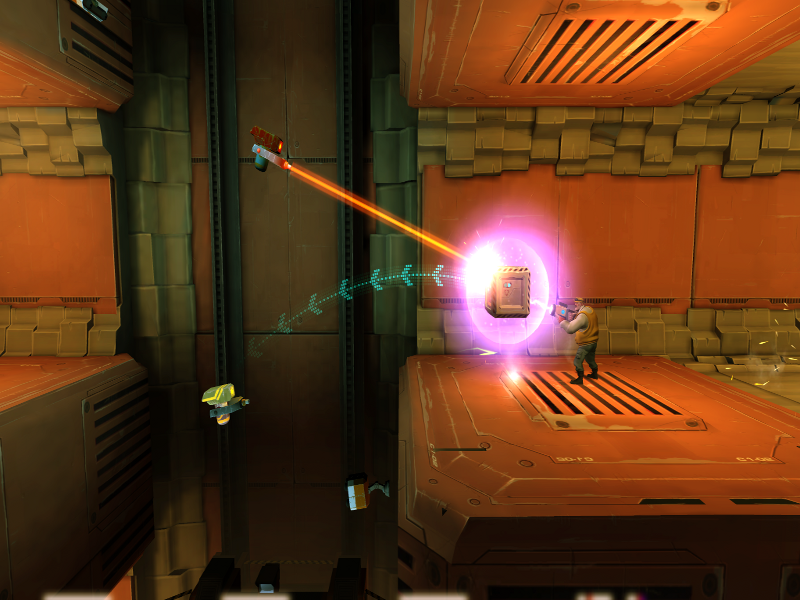
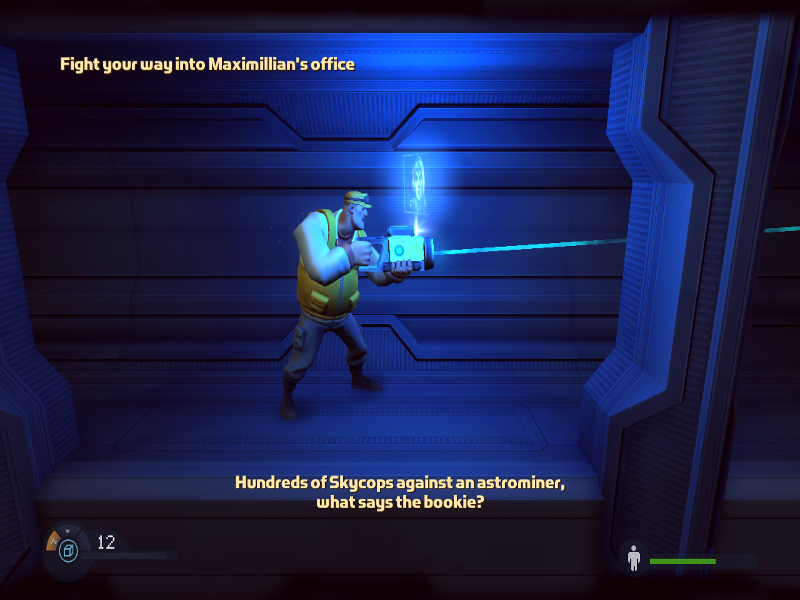
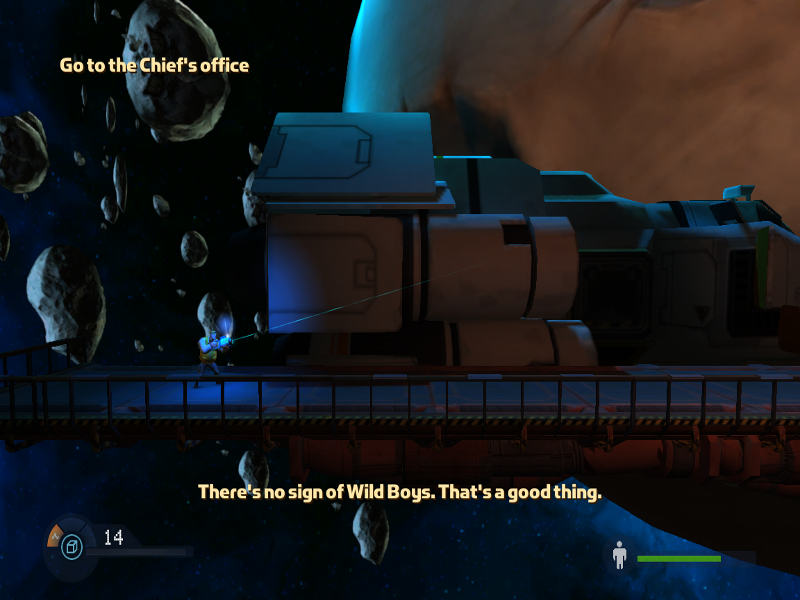
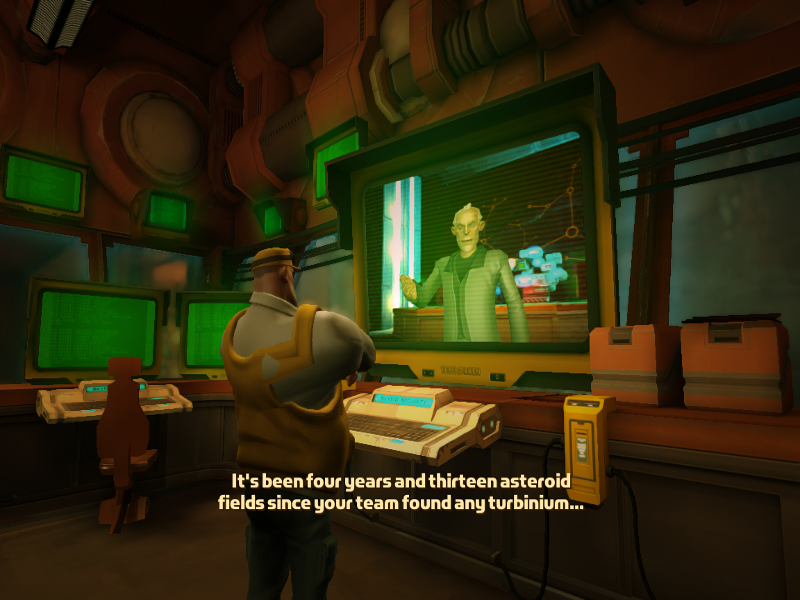
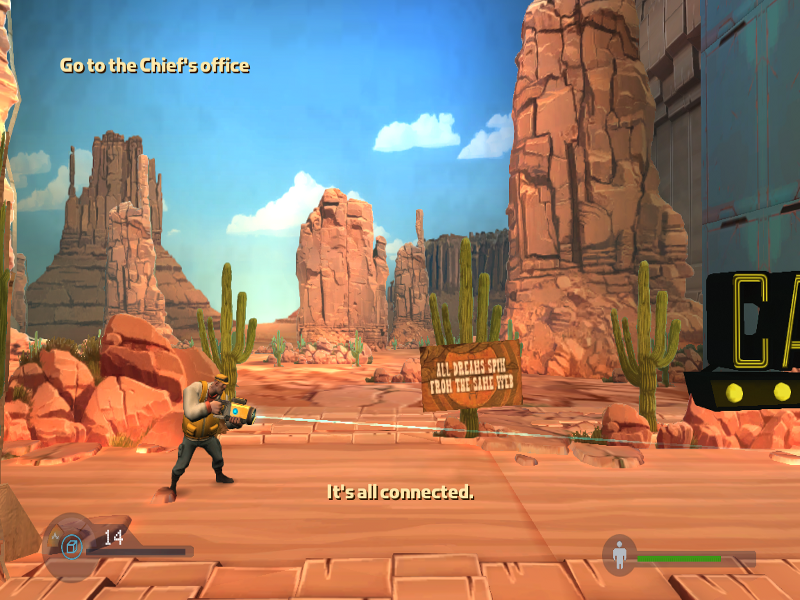
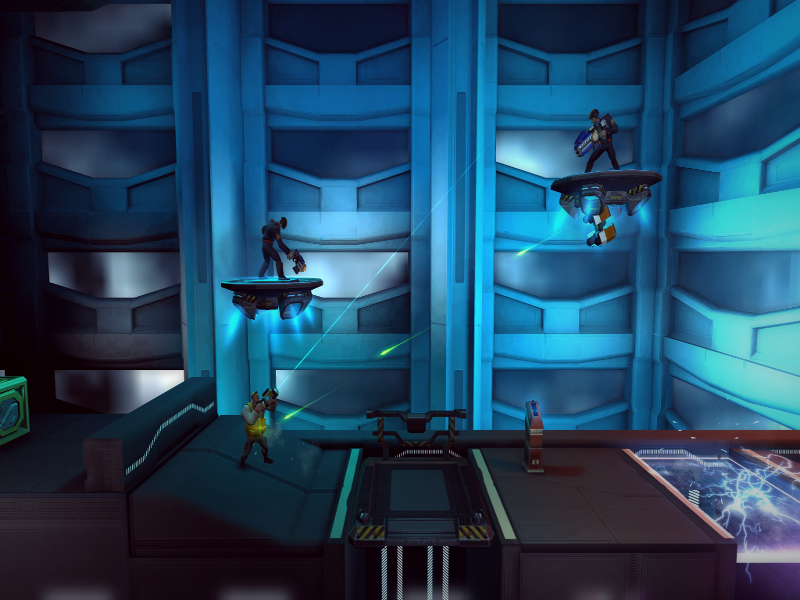
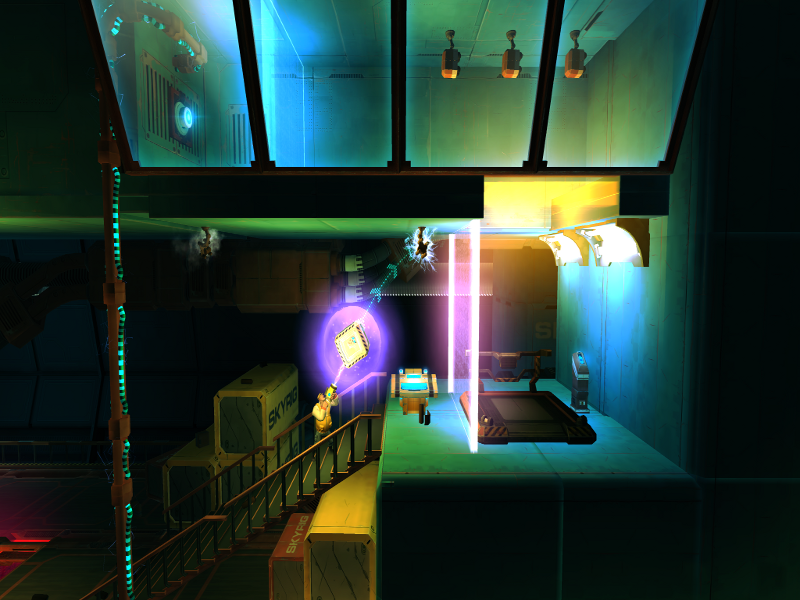
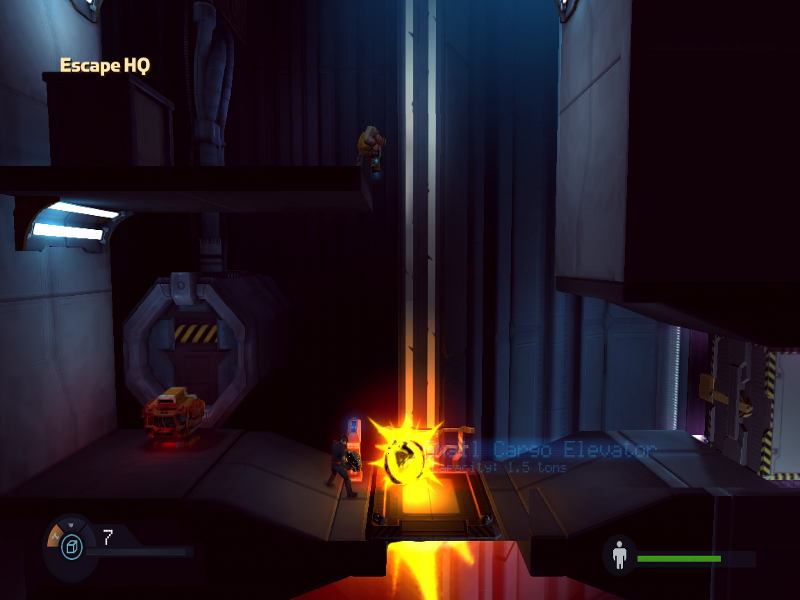
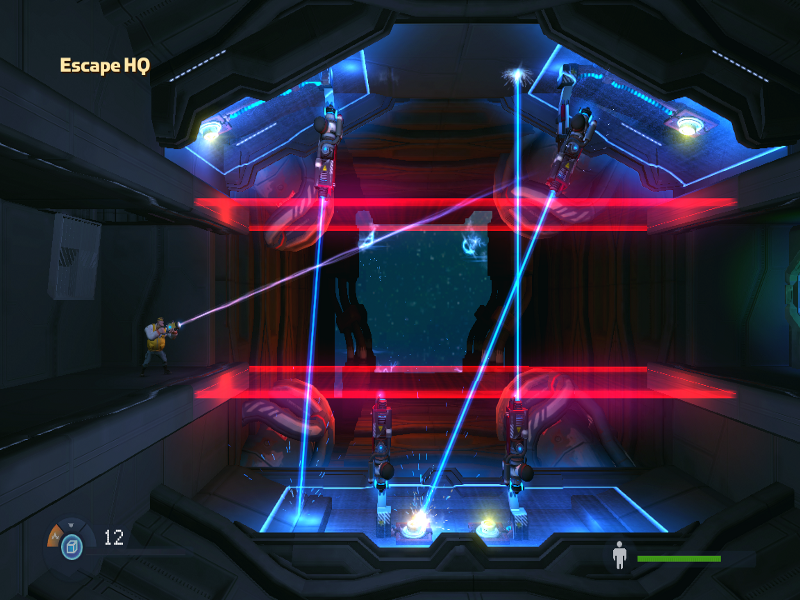
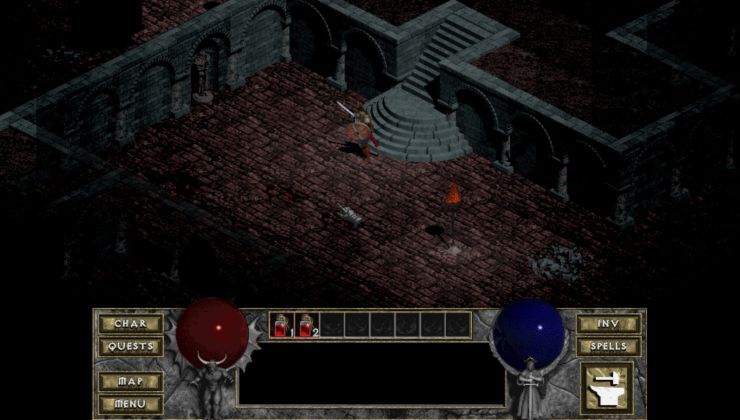

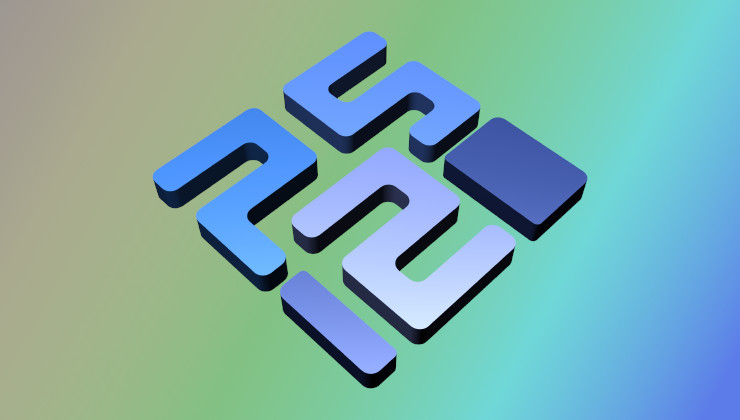




 How to set, change and reset your SteamOS / Steam Deck desktop sudo password
How to set, change and reset your SteamOS / Steam Deck desktop sudo password How to set up Decky Loader on Steam Deck / SteamOS for easy plugins
How to set up Decky Loader on Steam Deck / SteamOS for easy plugins
See more from me